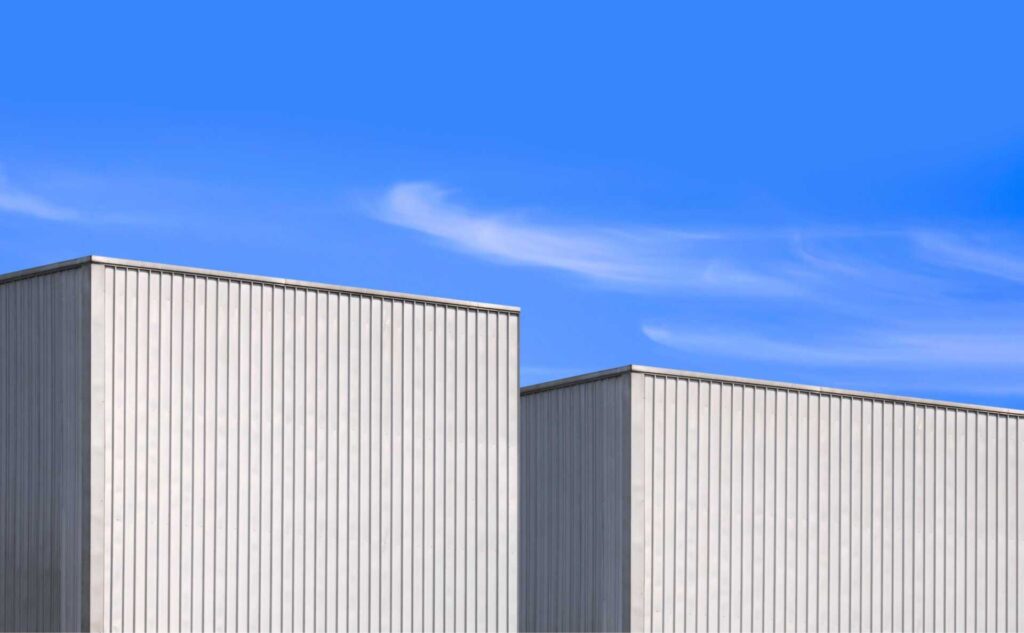
Contents
Steel structures are the backbone of reliability and efficiency when it comes to heavy machinery. The inherent strength and durability of steel offer a solid foundation for your operations, ensuring safety and stability. But that’s just the beginning. The benefits extend beyond mere strength. Steel structures have a lot more to offer, and understanding the full scope of advantages could transform the way you approach heavy machinery projects. Let’s explore how steel structures can elevate your operations to the next level.
Key Takeaways
- Steel structures offer unmatched strength and durability for heavy machinery.
- The corrosion resistance of steel ensures longevity in harsh environments.
- The high load-bearing capacity of steel supports heavy machinery operations efficiently.
- Customizable designs enhance structural strength and functionality for heavy machinery.
- Steel structures are cost-effective, quick to assemble, and environmentally friendly.
Strength and Durability
Steel structures offer unmatched strength and durability, making them ideal for supporting heavy machinery in industrial settings. The impact resistance of steel is a key factor in ensuring the safety and longevity of structures under heavy loads.
When heavy machinery is in operation, the ability of steel structures to withstand impact forces is essential for maintaining structural integrity and preventing catastrophic failures. Steel’s high strength-to-weight ratio also contributes to its impact resistance, allowing for the construction of lighter yet equally sturdy structures, thereby enhancing construction efficiency.
Furthermore, the structural integrity of steel ensures that it can support heavy machinery without warping or deformation over time. This structural stability is vital for maintaining the safety and functionality of industrial equipment.
In addition, steel structures’ impressive material longevity is due to their high resistance to wear and corrosion. This durability translates to reduced maintenance costs and downtime, making steel structures a cost-effective choice for industrial applications.
Corrosion Resistance
With its inherent resistance to corrosion, steel structures offer reliable protection against environmental degradation in industrial settings. Steel’s ability to withstand corrosion ensures the longevity and structural integrity of heavy machinery. Here are some key aspects highlighting the corrosion resistance of steel structures:
| Corrosion Resistance | Description | Importance |
|---|---|---|
| Surface Protection | Steel structures can be coated with protective layers to prevent rust formation, extending their lifespan. | Essential for maintaining the structural integrity of heavy machinery. |
| Rust Prevention | Proper surface treatment methods such as galvanization or painting help prevent the formation of rust on steel surfaces. | Rust can weaken the structure over time, leading to potential safety hazards. |
| Chemical Resistance | Steel’s resistance to various chemicals makes it suitable for industrial environments where exposure to corrosive substances is common. | Ensures the durability of machinery components in harsh chemical environments. |
| Weatherproofing | Steel structures can be designed to withstand extreme weather conditions, preventing corrosion due to moisture and other environmental factors. | Crucial for outdoor machinery exposed to diverse weather elements. |
Understanding these aspects of corrosion resistance in steel structures emphasizes the significance of choosing steel for heavy machinery applications. The ability to provide surface protection, rust prevention, chemical resistance, and weatherproofing makes steel a dependable choice for ensuring the longevity and reliability of industrial equipment.
High Load-Bearing Capacity
In heavy machinery applications, the high load-bearing capacity of steel structures plays an important role in ensuring operational efficiency and safety. Steel’s impressive strength-to-weight ratio allows for the construction of sturdy frameworks capable of withstanding heavy loads while maintaining structural integrity. This essential characteristic directly contributes to construction efficiency by reducing the need for additional support structures, ultimately simplifying the assembly process.
Furthermore, steel’s material efficiency further enhances its load-bearing capacity. By utilizing steel in heavy machinery designs, manufacturers can maximize the use of materials, minimizing waste and maximizing the overall strength of the structure. This enhances load distribution across the machinery and also ensures long-term structural stability, which is essential for the safe operation of heavy equipment.
Structural stability is vital in heavy machinery applications to prevent accidents and equipment failures. Steel structures excel in providing the necessary support to withstand dynamic loads and vibrations commonly encountered in industrial settings. The high load-bearing capacity of steel ensures that heavy machinery can operate efficiently and safely, meeting the demanding requirements of various industries.
Customizable Designs
When designing steel structures for heavy machinery, you can benefit from the flexibility steel offers. This allows you to customize the design to meet specific requirements for your machinery.
The structural strength of steel ensures that your customized design will maintain integrity even under heavy loads.
Design Flexibility
Steel structures offer unmatched design flexibility for heavy machinery applications, allowing for highly customizable designs to meet specific needs. This flexibility opens up opportunities for architectural creativity and inventive solutions in heavy machinery design. By leveraging steel’s malleability and strength, engineers can create intricate and unique structures that cater to the precise needs of the machinery they support.
One key advantage of steel structures in heavy machinery applications is the ability to maximize space effectively. Steel’s strength-to-weight ratio allows for the construction of lightweight yet sturdy frameworks, maximizing the utilization of available space. This space optimization capability is vital in environments where every square inch counts, enabling engineers to design compact yet efficient layouts for heavy machinery installations.
Moreover, steel structures facilitate functionality enhancements in heavy machinery design. The versatility of steel allows for the integration of various components and features smoothly, enhancing the overall performance and usability of the machinery. This adaptability ensures that the design can evolve to meet changing requirements and technological advancements, providing a future-proof solution for heavy machinery applications.
Structural Strength
With customizable designs, structural strength in heavy machinery steel structures can be precisely adjusted to meet specific performance requirements. This customization allows for a personalized approach to ensure structural stability and material efficiency.
Here are three key benefits of customizable designs for enhancing the structural strength of steel structures in heavy machinery:
Maximized Load-Bearing Capacities: Customizable designs enable engineers to optimize the load-bearing capacities of steel structures, ensuring they can withstand the heavy loads and stresses encountered during machinery operation.
Improved Durability: By fine-tuning the design based on specific performance requirements, structural stability is enhanced, leading to improved durability of the machinery. This increased durability ensures a longer lifespan and reduced maintenance costs over time.
Material Efficiency: Customizable designs promote material efficiency by using just the right amount of steel required to achieve the desired structural strength. This minimizes material waste and contributes to cost-effectiveness in the manufacturing process.
Longevity and Sustainability
Steel structures offer unparalleled durability over time, ensuring your heavy machinery is housed in a sturdy and long-lasting environment.
The eco-friendly construction of steel buildings minimizes waste and promotes sustainability, aligning with modern environmental standards.
Additionally, the low maintenance requirements of steel structures make them a cost-effective and efficient choice for housing heavy machinery.
Durability Over Time
Over the years, steel structures have proven to exhibit exceptional longevity and sustainability when used for heavy machinery applications. Steel’s inherent strength and durability make it a top choice for structures that require long-term performance and unwavering structural integrity.
Here are some key points to keep in mind:
Corrosion Resistance: Steel structures are highly resistant to corrosion, ensuring their longevity even in harsh environments where moisture and chemicals are present. This resistance helps maintain structural integrity over time, reducing the risk of premature deterioration.
High Load-Bearing Capacity: The sturdy construction of steel structures allows them to withstand heavy loads without compromising their durability. This feature is essential for heavy machinery applications, where the structure must support substantial weight over extended periods.
Low Maintenance Requirements: Steel structures require minimal upkeep compared to other materials, saving both time and costs in the long run. This characteristic contributes to their sustainability by reducing the need for frequent repairs and upkeep, ensuring reliable performance over the years.
Eco-Friendly Construction
An environmentally friendly approach to construction can be achieved through the longevity and eco-consciousness of steel structures in heavy machinery applications. Steel structures offer significant benefits relating to energy efficiency, green building, the use of eco-friendly materials, and minimizing environmental impact.
| Eco-Friendly Benefits of Steel Structures | Description |
|---|---|
| Energy Efficiency | Steel structures can be designed to maximize energy efficiency, reducing overall energy consumption during the operation of heavy machinery. |
| Green Building | Utilizing steel structures aligns with green building practices, contributing to environmentally friendly construction methods. |
| Eco-Friendly Materials | Steel is a highly eco-friendly material, as it is recyclable and can be repurposed without losing its quality or strength. |
| Environmental Impact | Steel structures have a low environmental impact compared to other construction materials, making them a preferred choice for environmentally conscious projects. |
| Longevity and Eco-consciousness | The durability and longevity of steel structures result in reduced maintenance needs and a longer lifespan, further enhancing their environmentally friendly profile. |
Low Maintenance Requirements
Durable longevity in heavy machinery applications can be achieved through the low maintenance requirements of steel structures. Steel’s inherent strength and resistance to corrosion make it an ideal choice for heavy machinery, reducing the need for frequent repairs and upkeep. This results in significant cost savings over the lifespan of the equipment and enhances operational efficiency.
Extended Lifespan:
Steel structures have a longer lifespan compared to other materials, reducing the frequency of replacements and repairs.
Minimal Corrosion:
Steel’s resistance to corrosion minimizes the need for protective coatings and inspections, decreasing maintenance costs.
Easy Repairs:
Steel structures are easier to repair in the rare event of damage, leading to shorter downtimes and improved operational efficiency.
Cost-Effective Solutions
Careful planning and analysis of project requirements are essential to achieving cost-effective solutions when contemplating steel structures for heavy machinery. When it comes to material efficiency, steel structures offer a high strength-to-weight ratio, meaning they require less material to support heavy machinery compared to other construction materials. This reduces material costs and makes transportation and installation easier and more cost-efficient.
Energy efficiency is another key aspect to ponder. Steel structures can be designed to allow for natural light and ventilation, reducing the need for artificial lighting and climate control systems. This cuts down on energy consumption and leads to long-term savings on utility bills.
In terms of operational efficiency, steel structures are known for their durability and low maintenance requirements, which translates to reduced operational costs over the lifespan of the structure. Additionally, steel structures can be prefabricated off-site, saving time and labor costs during the construction phase.
Easy Maintenance
Maintaining proper upkeep and servicing of steel structures for heavy machinery is crucial in preserving peak functionality and longevity. Steel structures offer simple maintenance procedures that can result in cost savings and efficient operations.
Here are three key points to ponder:
Durability: Steel structures are renowned for their sturdiness, requiring minimal upkeep compared to other materials. This sturdiness translates to cost savings over time, as fewer repairs and replacements are necessary, allowing for more efficient operations without extended downtime.
Corrosion Resistance: Steel structures can be designed with protective coatings that boost their resistance to corrosion. By preventing rust and deterioration, maintenance efforts are decreased, saving both time and money in the long term. This corrosion resistance feature contributes to the effective functioning of heavy machinery housed within the steel structures.
Accessibility for Inspections: Steel structures are often designed with accessibility in mind, making it simpler to conduct regular inspections and maintenance checks. This accessibility ensures that maintenance tasks can be carried out promptly and facilitates early detection of any issues, leading to proactive maintenance that prevents costly breakdowns.
Fire Resistance
Enhance the safety of heavy machinery operations by considering the exceptional fire resistance properties of steel structures. Steel structures offer outstanding fire resistance due to their high melting point, making them a reliable choice for environments where fire safety is vital.
Steel’s thermal insulation properties help in containing fires within a limited area, preventing them from spreading rapidly. This is essential in protecting both machinery and personnel, minimizing potential damage in case of a fire incident.
Moreover, steel’s impact resistance further enhances its fire safety features. In the event of a fire-related accident, steel structures are more likely to maintain their structural integrity, providing a safer environment for heavy machinery operations.
In addition to fire resistance, steel structures exhibit excellent weather resistance. They can withstand harsh environmental conditions, ensuring their longevity and reliability even in extreme climates.
Furthermore, steel’s low thermal conductivity helps in preventing the rapid spread of heat in case of a fire, contributing to better containment and control of the situation.
Quick Construction Timelines
Steel structures facilitate rapid construction timelines because of their prefabricated components and efficient assembly processes. When contemplating the construction of facilities for heavy machinery, using steel structures can have a significant impact on project efficiency and overall cost savings.
Here are some key points to keep in mind:
Cost Savings: Prefabricated steel components reduce construction time considerably, leading to lower labor costs and quicker project completion. This cost-effectiveness is advantageous for companies seeking to enhance their budget allocation for heavy machinery facilities.
Time Management: Steel structures offer swift assembly processes, allowing for better time management throughout the construction project. With reduced construction timelines, project managers can streamline tasks, ensuring timely completion and delivery of the facility.
Productivity Benefits: By employing steel structures, construction teams can work more effectively due to the ease of assembly and installation. Enhanced productivity on-site translates to quicker project completion, enabling businesses to commence operations in the new facility sooner.
Summary
Steel structures offer a wide range of benefits for heavy machinery applications.
Take for example a mining operation that utilized steel structures for their equipment housing. The strength, durability, and corrosion resistance of the steel provided a secure and stable environment for their machinery, resulting in increased efficiency and reduced maintenance costs.
With customizable designs, cost-effective solutions, and quick construction timelines, steel structures are the ideal choice for heavy machinery needs.
Recent Posts
3 Tips for Personalized Metal Garage Solutions
Finding personalized metal garage solutions can transform your cluttered space into a functional haven. By
Guide to Lasting Metal Structures for Homes
Imagine a sturdy metal garage standing proud against the fiercest storms, much like a lighthouse
What Are Affordable Metal Garage Options for Farms?
Imagine you’re managing a bustling farm like Smith’s Acres, where every inch of space counts.




